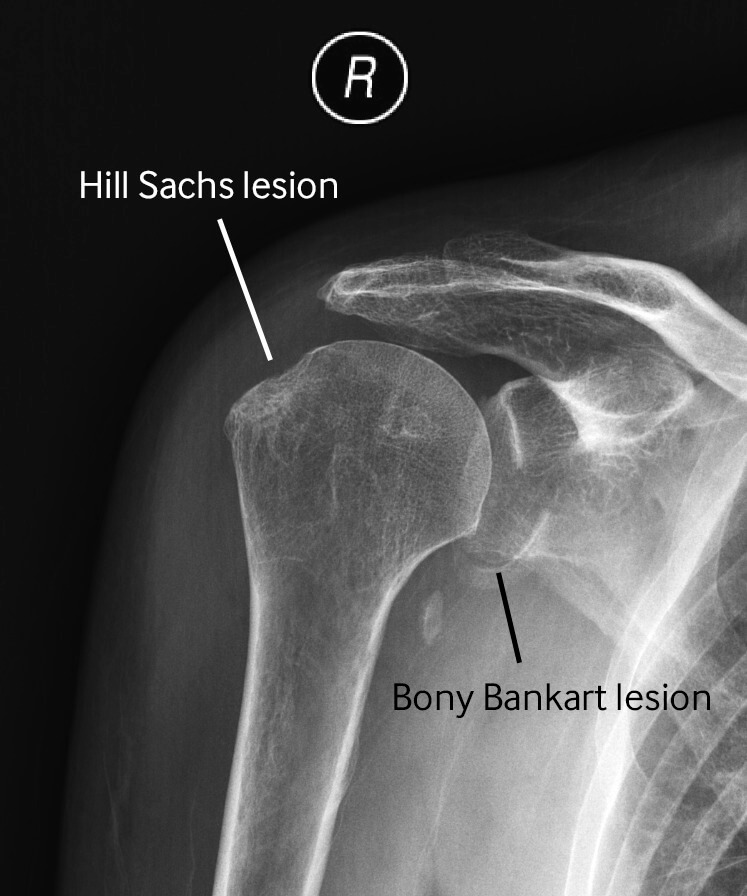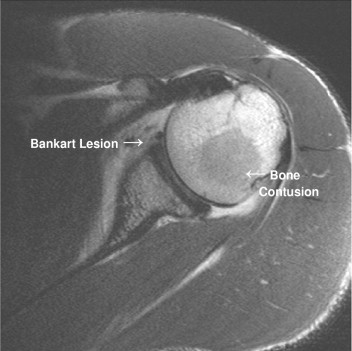
What is Bankart Leision?
Bankart lesion, also known as Bankart tear or Bankart lesion syndrome, is a specific type of injury that affects the shoulder joint. It involves damage to the anterior (front) portion of the glenoid labrum, which is a fibrous cartilage ring that surrounds the shoulder joint socket (glenoid) and helps stabilize the joint.
Causes and Symptoms
Bankart lesions typically result from traumatic shoulder dislocations or repetitive shoulder instability. The most common cause is a forceful anterior dislocation of the shoulder, which occurs when the arm is forced out of its socket forward, stretching and tearing the labrum in the process. This injury is commonly seen in athletes who engage in contact sports or activities that involve repetitive overhead motions, such as cricketer, volleyball player, football players, and swimmers.
Symptoms: The symptoms of a Bankart lesion can include:
- Pain: Pain is often felt in the front of the shoulder, particularly during arm movements or when attempting to lift heavy objects.
- Shoulder instability: Patients may experience recurrent episodes of shoulder dislocation or subluxation (partial dislocation) due to the loss of stability in the joint.
- Decreased range of motion: The shoulder’s range of motion may be limited, especially with overhead movements.
- Weakness: The affected shoulder might feel weak, making it difficult to perform certain activities.


How to find out Bankart Injury?
Diagnosing a Bankart lesion typically involves a combination of clinical evaluation and diagnostic imaging.
Physical Examination: Sports medicine specialist, will conduct a thorough physical examination of the shoulder. They will assess the range of motion, stability, and any signs of tenderness or pain.
History and Symptoms: The doctor will inquire about the patient’s medical history and ask about any past shoulder injuries or incidents that could have caused the current symptoms, such as shoulder dislocations or episodes of instability.
X-rays: Standard X-rays (radiographs) are often the first imaging test performed to evaluate the shoulder joint. While X-rays may not directly show the soft tissues like the labrum, they can help rule out other conditions and assess for any bone abnormalities or fractures that may be related to the shoulder instability.
Magnetic Resonance Imaging (MRI): An MRI scan is one of the most valuable imaging tests to diagnose a Bankart lesion. It provides detailed images of the soft tissues, including the labrum, and can identify tears, fraying, or detachment of the labrum. MRI is particularly useful in detecting the extent of the injury and determining the appropriate treatment plan.
Magnetic Resonance Arthrography (MRA): MRA is a specialized MRI technique where a contrast dye is injected into the shoulder joint before the MRI scan. This helps to enhance the visibility of the structures within the joint, including the labrum, and can provide even more detailed images for a more accurate diagnosis.
Computed Tomography (CT) Scan: In some cases, a CT scan may be used to assess bony abnormalities and evaluate the glenoid socket and its relationship to the labrum and surrounding structures.
Treatment
The management of a Bankart lesion typically involves both conservative (non-surgical) and surgical approaches, depending on the severity of the injury and the individual's lifestyle and goals.
Conservative Treatment:
Rest: Avoid activities that aggravate the shoulder and allow time for the labrum to heal.
Immobilization: Wearing a sling or brace to limit movement and protect the shoulder from further injury.
Physical Therapy: Specific exercises to strengthen the surrounding muscles, improve range of motion, and stabilize the shoulder joint.
Anti-inflammatory medications: To help reduce pain and inflammation.
Ice and Heat: Applying ice packs or warm compresses can aid in pain relief and reduce swelling.
Surgical Treatment:
Arthroscopic Repair: In cases of recurrent shoulder instability or severe Bankart lesions, surgery may be recommended. Arthroscopic surgery is the most common approach, where a small camera and surgical instruments are inserted through small incisions to repair the torn labrum and restore stability to the shoulder joint.
Open Surgery: In some cases, open surgery may be required for complex or large tears that cannot be adequately repaired using arthroscopy.
Rehabilitation: After surgery, a structured physical therapy program is essential to regain strength, range of motion, and stability in the shoulder.

